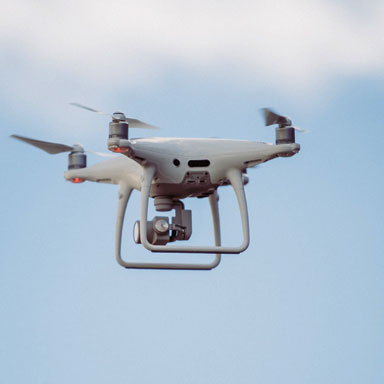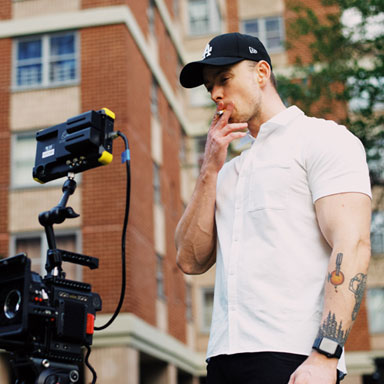‘All Light Everywhere’
“All Light Everywhere” winds its direction through fragmentary perceptions about current reconnaissance society, uncovering a wide scope of indistinct associations regarding its subject. Nonetheless, Theo Anthony’s aggressive narrative uncovers one splendid association – an intriguing heredity between the camera and the firearm – and establishes it in verifiable reality. In this independent movie the producer’s peculiar and charming rumination on the manners in which innovation applies command over human existence is a commendable development to his 2016 introduction “Rodent Film,” which involved Baltimore’s rat pervasion as a shrewd analogy for improvement. However the outcomes are less durable this time, “All Light Everywhere” gives one more convincing riff on the dismal powers administering day to day existence that is both disturbing and stunning on the double.
Anthony starts with a striking visual allegory, delighting in the vulnerable side of the optic nerve, and making way for an examination concerning how little we see about the manner in which the world glances back at us. The resulting section based adventure tilts from a distribution center that creates tasers and police body cameras, to instructional meetings for officials who wear the gadgets, the intrigues of a covert operative plane business visionary, and the historical backdrop of camera pigeons in WWI. A trial with neural reaction travels every which way, if just because to develop a feeling of Orwellian subjects at work. In the most convincing sections, this independent movie travels back to the late nineteenth century, uncovering the semi-secret history of astrophotography and mug shots, tracking down a striking arrangement of associations between camera innovation and weapons of war. Each of that completes the cycle in a climactic showdown regarding the idea of protection in a world administered by corporate power.
It’s a ton to take in, and only one out of every odd pathway prompts a satisfying result, however Anthony’s mysterious style keeps the interest factor high all through. Similarly as with “Rodent Film,” an impartial voiceover creeps into the story to clarify a portion of the more huge chronicled subtleties, adding a cerebral quality to the excursion that infrequently transforms into conceptual digressions (“structure is just a preview perspective on progress”) that don’t continuously serve the master plan. By and by, it’s not difficult to envision a lesser narrative on any of the subjects that Anthony stuffs into individual sections, and captivating to watch him sort through them all looking for more prominent importance.
This independent movie shows additional disturbing sections observes Anthony visiting the central command of Axon Enterprise, the Arizona taser improvement organization, as a corporate chief leads the camera through a mechanical production system and shows the accuracy of its high level tech. The risk emerges by suggestion: We learn, for instance, how the camera on a taser takes on the viewpoint of the shooter – basically embracing his perspective, and making an uneven form of occasions as they occur. Afterward, in a police instructional meeting, officials figure out how the nonstop transferring of film assists them with placing vicious showdowns in setting. Hypothetically, that implies more noteworthy responsibility – yet it additionally appears to energize a more prominent straightforwardness with vicious activity, under the presumption that the camera will continuously excuse them later.
In a large number of these sections, Anthony’s camera turns out to be important for the dramatization, a token of the numerous reconnaissance layers at work in each scene. It’s a convincing gadget in parts and diverting at others, similar as the consistently present subtitles that occasionally supplant the voiceover while clarifying the scenery of specific scenes. This independent movie; “All Light Everywhere” tosses a ton on the screen, speeding forward with the spirited energy of Godard, and requests watchers lose all sense of direction in its exceptional frequency.
Focus, however, and its most prominent contentions hold novel allure. After the film clarifies how the primary convenient camera was based on a similar innovation utilized for mounted guns, it’s no enormous leap for Anthony to show how a covert agent plane floating over the Baltimore region keeps that connection alive. As Dan Deacon’s inauspicious score melds the different sections together, the film mixes its unique time spans into an arresting reflection on the powers that constrained society to assume responsibility for its general population as the instruments developed to assist with getting that going.
Is it true that he is selling progress or oppressed world? A comparative inquiry torment the strange center gathering that assembles every once in a while onscreen, and furthermore the Baltimore Police Department instructional course given to Axon body cameras. There, officials look exhausted and dubious as a sergeant strolls them through strategies and systems he claims will help the police basically however much it safeguards the privileges of residents.
In noticing these connections – and a Baltimore local gathering on the utilization of plane mounted cameras to follow development on city roads – Anthony coaxes out the upsetting political ramifications of methods that are frequently introduced as nonpartisan or considerate.
This independent movie makes us to believe that photos don’t lie, and that information has no inclination. However, Anthony proposes not just that there is generally a perspective at work, yet additionally that pictures and data are promptly weaponized by those with power, utilized for the order and control of those without it.
Pixel animation independent movie
In a way that shows restraint – and once in a while even energetic – rather than polemical, “All Light, Everywhere” adds to banters about wrongdoing, policing, prejudice and responsibility. In its last minutes it motions past those contentions, toward a totally different arrangement of thoughts regarding what cameras can do. A concise epilog reports Anthony’s association in a filmmaking program for Baltimore secondary school understudies, an encounter the chief concedes he was unable to sort out some way to squeeze into this independent movie. Its incorporation in any case adds the flicker of a counterargument to an alarming record of a portion of the manners in which Big Brother is watching us – an update that most of us have eyes, as well.
Everything works to a surprising climactic set piece, which observes a Baltimore local gathering – completely populated by ethnic minorities – rebelling against the white government agent plane scion endeavoring to persuade them that the item is there to their benefit. All things being equal, they oppose surrendering protection with the goal that a concealed presence can settle wrongdoings since it’s dependably an uneven suggestion. “Turn the camera around,” one man says, “and you will make it discernible.” No matter where it meanders, “All Light Everywhere” consistently clarifies that cameras can kill us similarly as much as the weapons that enlivened them. The main conceivable break lies in sorting out who’s pulling the trigger.




